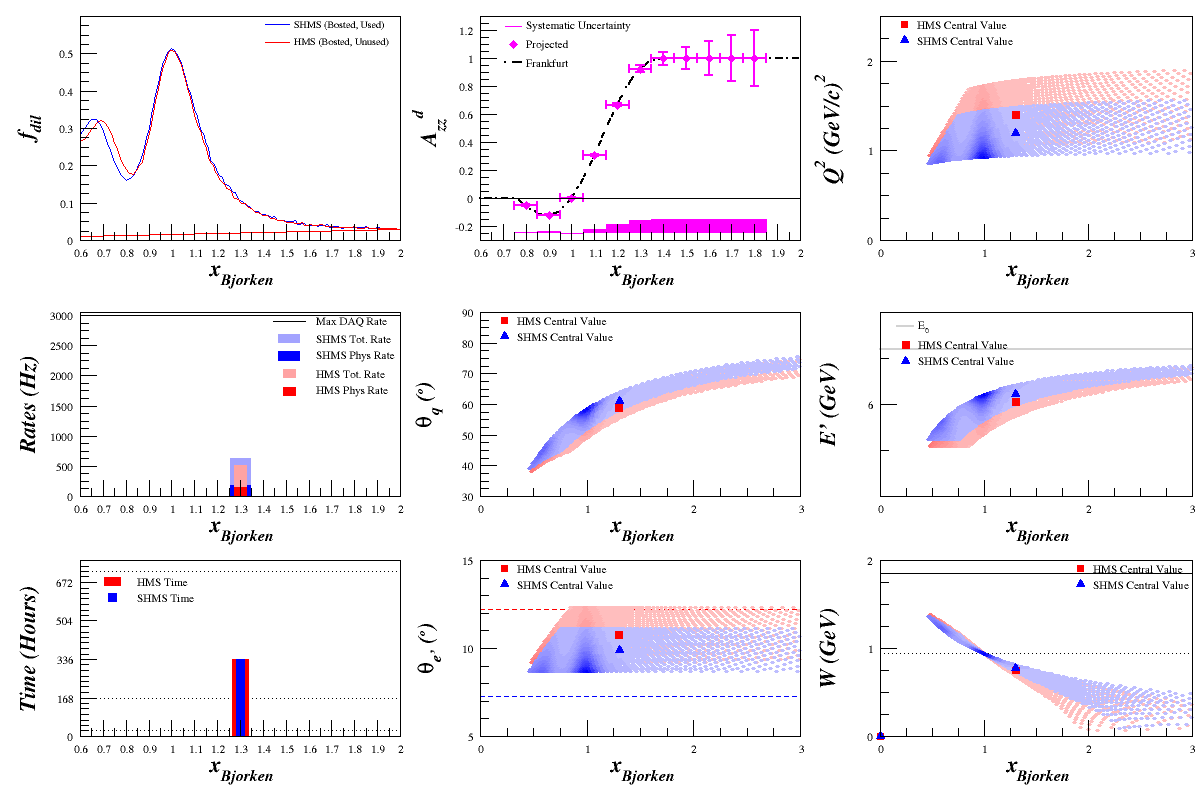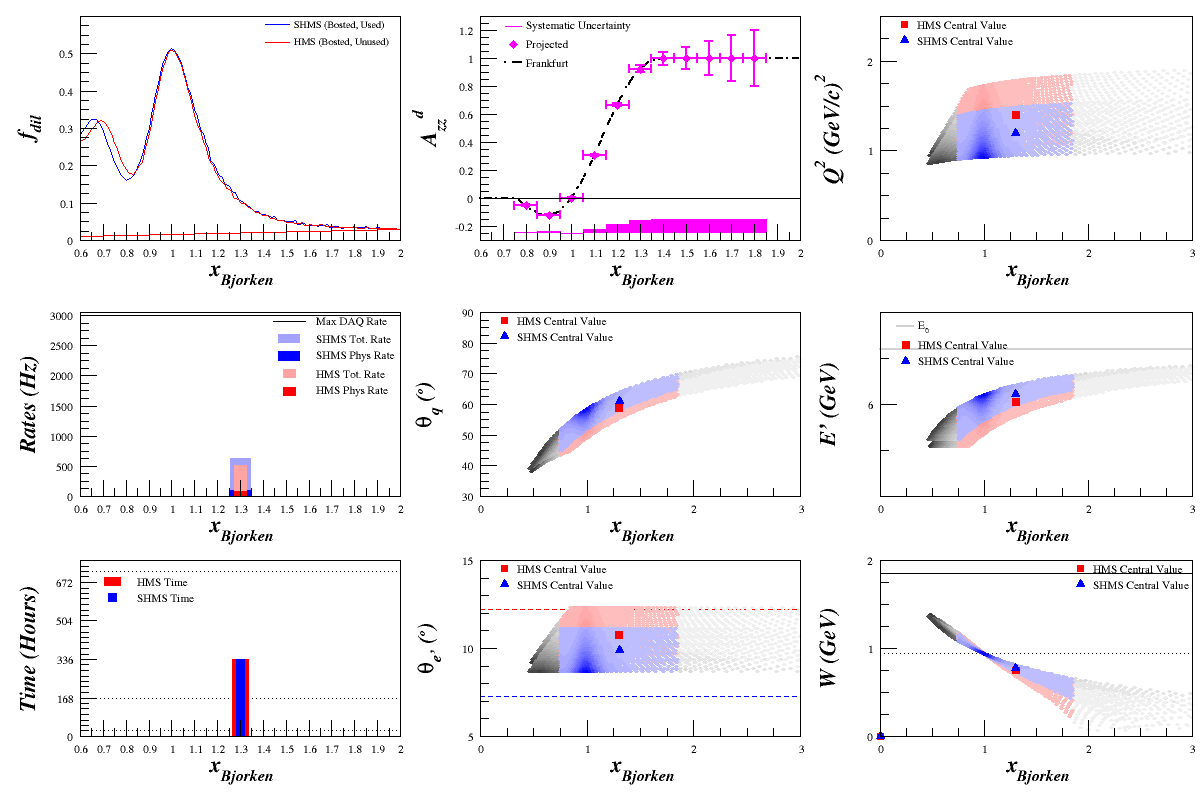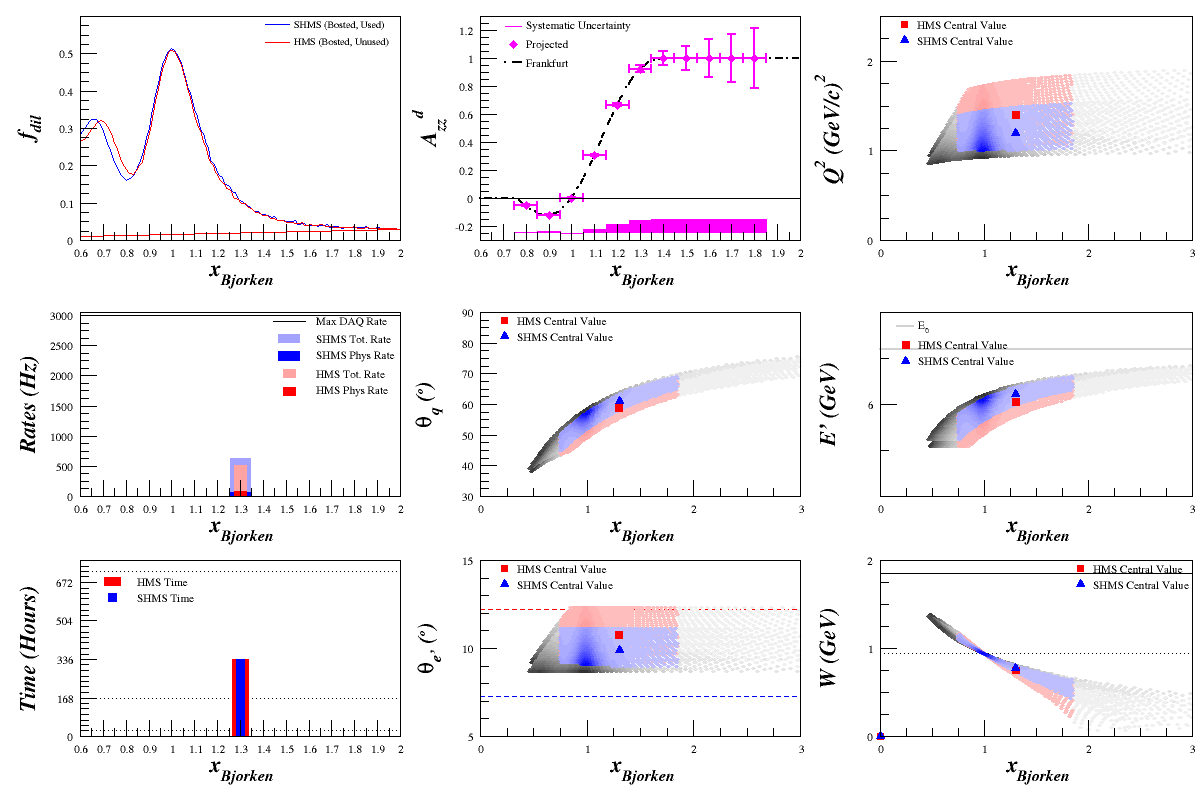Difference between revisions of "Elong-13-10-10"
| Line 3: | Line 3: | ||
---- | ---- | ||
| − | I took the edited the output of Azz plots so that they have their own, dedicated grace files. I then replaced the b1 plot with the dilution factor and shaded the kinematics plots by the total cross-section (N+He+2H), where darker = larger cross-section and lighter = smaller cross-section. The cross-sections each have 20 shading bins, with the cross section in that section being linearly scaled to fit from 1-20. This means that it's not the same scale across spectrometers, or from cuts to background, just to keep in mind. | + | I took the edited the output of Azz plots so that they have their own, dedicated grace files. I then replaced the b1 plot with the dilution factor and shaded the kinematics plots by the total cross-section (N+He+2H), where darker = larger cross-section and lighter = smaller cross-section. The cross-sections each have 20 shading bins, with the cross section in that section being linearly scaled to fit from 1-20. This means that it's not the same scale across spectrometers, or from cuts to background, just to keep in mind. I included it to get a sense of where our data is coming from. |
If we don't make any cuts on the kinematics, we can get a sense for the cross-section everywhere: | If we don't make any cuts on the kinematics, we can get a sense for the cross-section everywhere: | ||
Revision as of 13:46, 10 October 2013
Azz with Color-Coded Plots
I took the edited the output of Azz plots so that they have their own, dedicated grace files. I then replaced the b1 plot with the dilution factor and shaded the kinematics plots by the total cross-section (N+He+2H), where darker = larger cross-section and lighter = smaller cross-section. The cross-sections each have 20 shading bins, with the cross section in that section being linearly scaled to fit from 1-20. This means that it's not the same scale across spectrometers, or from cuts to background, just to keep in mind. I included it to get a sense of where our data is coming from.
If we don't make any cuts on the kinematics, we can get a sense for the cross-section everywhere:
If we they add the x cut, the thrown-out events, still in grey, are now also shaded:
And adding a Q2>1 cut:
--E. Long 18:44, 10 October 2013 (UTC)


